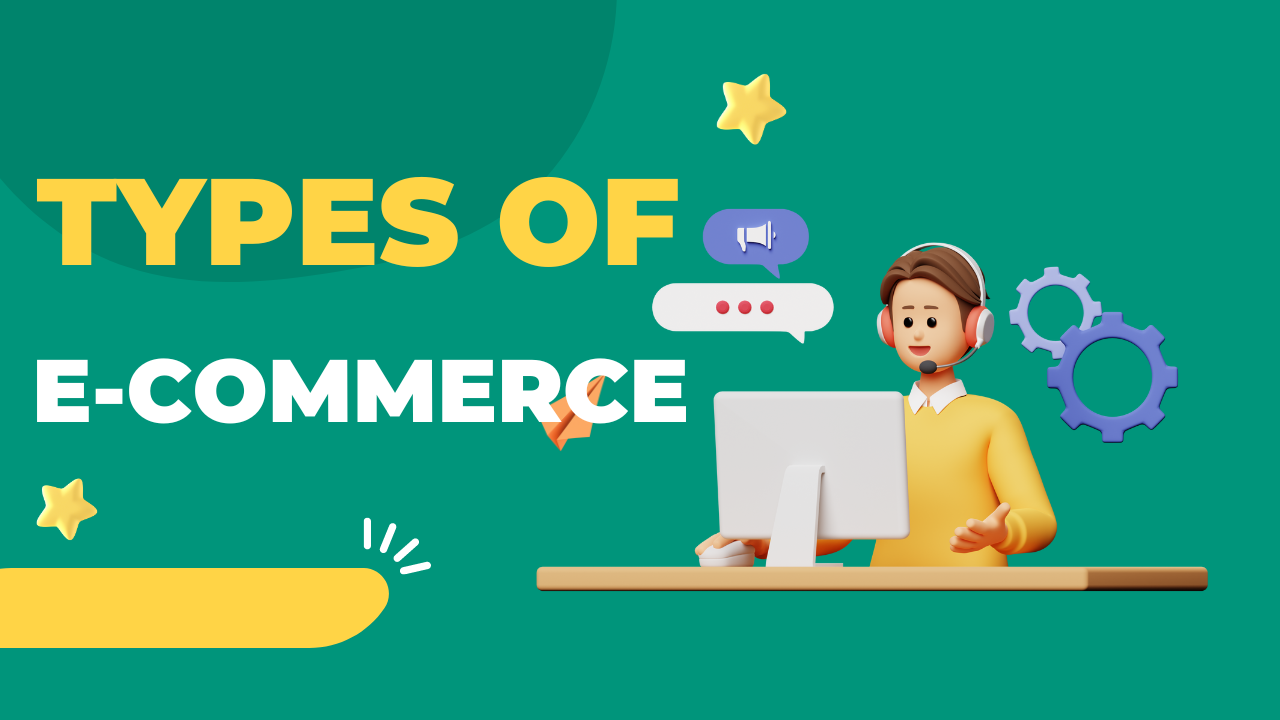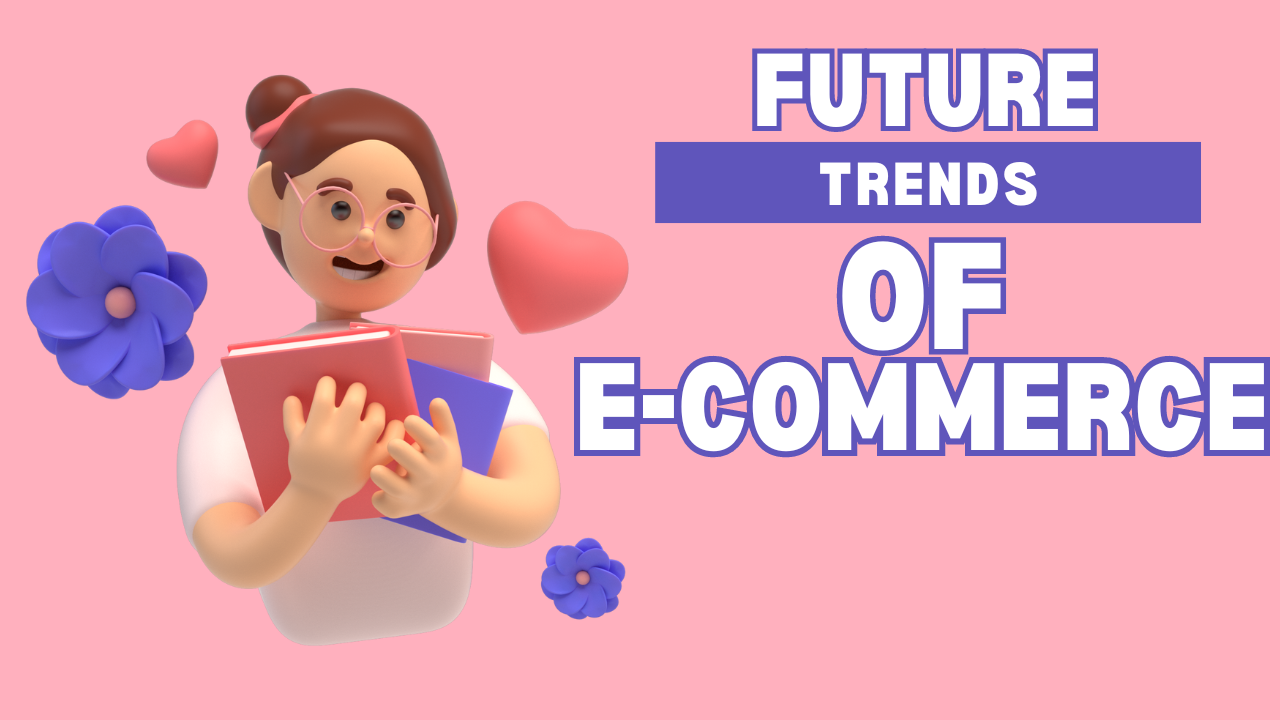Understanding E-commerce: A Comprehensive Guide
What is Ecommerce?E-commerce is the buying and selling of products and services through the Internet, allowing customers to shop from anywhere using online stores. Websites and mobile apps are used for e-commerce where buyers can select and order different products.
This process is easy for customers because they do not need to go to the market. Through e-commerce, business owners can also sell their products internationally. It uses online payment systems like credit cards, debit cards, and online banking.
With the development of e-commerce, businesses have made more profit. Entrepreneurs can run their business through this. It includes selling products, website design, SEO, digital marketing, and customer services. E-commerce has created new business opportunities and changed the way people shop.
Let’s dive into how e-commerce works and find out if it’s right for you.
What is E-commerce:
E-commerce stands for electric commerce. This is a modern method that is different from traditional methods. E-commerce uses online stores and websites where customers can view, select, and place orders.

This includes online payment systems such as credit cards, debit cards, and other online payment methods.
History of Ecommerce:

The history of e-commerce dates back to the 1960s when Electronic Data Interchange (EDI) was introduced. Through EDI, businesses could exchange business documents without paper. Netscape in 1994 introduced the Secure Sockets Layer (SSL) protocol, which secured online transactions.
Amazon in 1995 started the era of online books, which later became the world’s largest e-commerce company. In the same year, eBay began operating as an online auction platform. In the 2000s, online payment systems and marketplaces such as PayPal and Alibaba further developed e-commerce.
Note:To learn how to start selling on amazon download ebook from here
After 2010, mobile e-commerce boomed due to the increased use of smartphones. Today e-commerce is used to sell not only products but also services, digital content, and subscriptions. E-commerce has changed the global economy and created new business opportunities.
Types of Ecommerce:

There are different types of e-commerce based on business models and customer relationships. Some of the main types are explained here:
Business-to-Consumer:
This is the most common type of e-commerce in which businesses sell products or services directly to consumers. For example online retail stores like Amazon and Ali Express.
Business-to-Business:
This is Business-to-business transactions. Here the companies are doing business with each other. The final consumer is not involved.
Consumer-to-consumers:
In this model, consumers sell products or services to other consumers. Examples of this are eBay and Olx where people sell their used items.
Business to Administration:
In this model, businesses provide products to government agencies. For example, an IT service provider company for government institutions to develop software.
Consumer administration:
In this model, individuals transact with government agencies, such as paying taxes or requesting government services.
Consumer-to-Business:
This is the reverse of B2C, it is a consumer-to-business. So the consumer provides a good or some service to the company. Say for example an IT freelancer who demos and sells his software to a company. This would be a C2B transaction.
These types of e-commerce offer different business opportunities.
Benefits of Ecommerce:

E-commerce has many advantages for businesses:
Ease process: Companies can sell their products online using e-commerce platforms. This makes the shopping process very easy for the buyers.
Global reach: Businesses can sell their products globally, giving them access to new markets and buyers.
Round-the-clock availability: Businesses can be active 24/7, allowing buyers to place orders anytime.
Change in how people shop: E-commerce has simplified shopping, allowing buyers to select products from the comfort of their homes and make online payments.
Different channels for people: Through e-commerce businesses can keep in touch with buyers through various channels, such as email marketing, social media, and search engine optimization.
Best price for people: Through e-commerce, buyers get different and best prices because they can compare on various websites.
Best supply of products: Through e-commerce, buyers get the best supply of different products, from which they can easily get opportunities for different past products.
Peer-to-Peer Facility: Through e-commerce platforms like Olx and other peer-to-peer platforms, users can also sell their used goods.
E-commerce has created new opportunities in the world of business.
Challenges of E-commerce:

There are also some challenges of e-commerce that businesses and consumers have to face:
Security Issues: The security of online payment systems and users’ personal information is a major issue.
Lack of trust: It can be difficult for new customers to trust online shopping because they can see or touch the product directly.
Unavailability of people: Some people cannot benefit from e-commerce due to the unavailability of an internet connection.
Return and Refund Policy: Product returns and refunds can be problematic, especially if policies are not clear.
Technical problems: Website technical problems, server downtime, or payment issues can damage a business’s reputation.
Increased competition: The competition in e-commerce is very high.
Logistics and Shipping: Timely and safe delivery of products can be a challenge, especially when trading internationally.
Legal and regulatory issues: Following the different laws and regulations of various countries can be difficult especially when the business is operating internationally.
Cultural and language issues: Understanding the needs and preferences of consumers from different countries and cultures and providing products accordingly can take time and effort.
Customer Service: Online customer service, especially providing effective and prompt resolution of complaints, is a big challenge.
Businesses can face these challenges. By overcoming them, companies can better serve their customers.
Future trends in E-commerce:

Future trends in e-commerce are related to changes in technology and consumer behavior. Here are some of the trends that will shape the future of e-commerce:
Mobile e-commerce: Due to the increasing use of smartphones and mobile apps, mobile e-commerce is increasing. People are shopping more on mobile and businesses are also developing mobile-friendly websites and apps.
Artificial intelligence and machine learning: By using AI and machine learning, businesses can improve their products and services,
Voice e-commerce: The trend of shopping through voice assistants like Alexa and Google Assistant is increasing.
Subscription services: Subscription boxes and services are a growing trend, where products are delivered to customers monthly or weekly.
Social Commerce: Social media platforms like Facebook, Instagram, and Pinterest are used for buying and selling products.
Fast and Free Shipping: The demand for fast delivery and free shipping is increasing. Businesses have focused on this so customers can get products in less time and at no extra cost.
Blockchain Technology: Blockchain technology makes online transactions more secure and transparent, increasing trust in e-commerce.
These trends will increase the future of e-commerce and provide new opportunities for businesses.
Conclusion:
Nowadays E-commerce business is growing fast. Companies start business on e-commerce platforms such as Daraz, Shopify, WordPress, Magento, etc.
As technology advances, so does the eCommerce landscape, which presents new opportunities and challenges. Understanding the basics of eCommerce is essential for those who want to thrive in this dynamic environment.
Above we explain What is ecommerce?. I hope you understand the full concept of it.
Now, it depend on you to choose the best ecommerce platform which meet your expectations.
To read more article please visit our webesite ammoneymaker.com
FAQs
Is e-commerce still growing?
Yes, ecommerce is still growing. The COVID-19 pandemic has further boosted online shopping, increasing people’s online shopping habits. Mobile commerce, social media shopping, and artificial intelligence are further developing eCommerce.
Is e-commerce profitable?
Yes, the e-commerce business is quite profitable. Most companies are improving because of their high overheads and low costs. It is important to meet the expectations of customers.
Which e-commerce platform is best?
Various eCommerce platforms are available such as Shopify, WooCommerce, Magento, and BigCommerce. Each has its benefits and features. The choice depends on the size and needs of your business.
